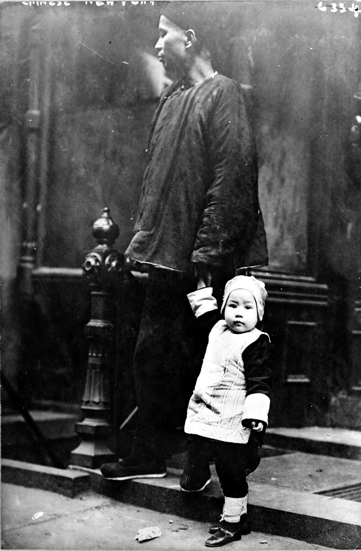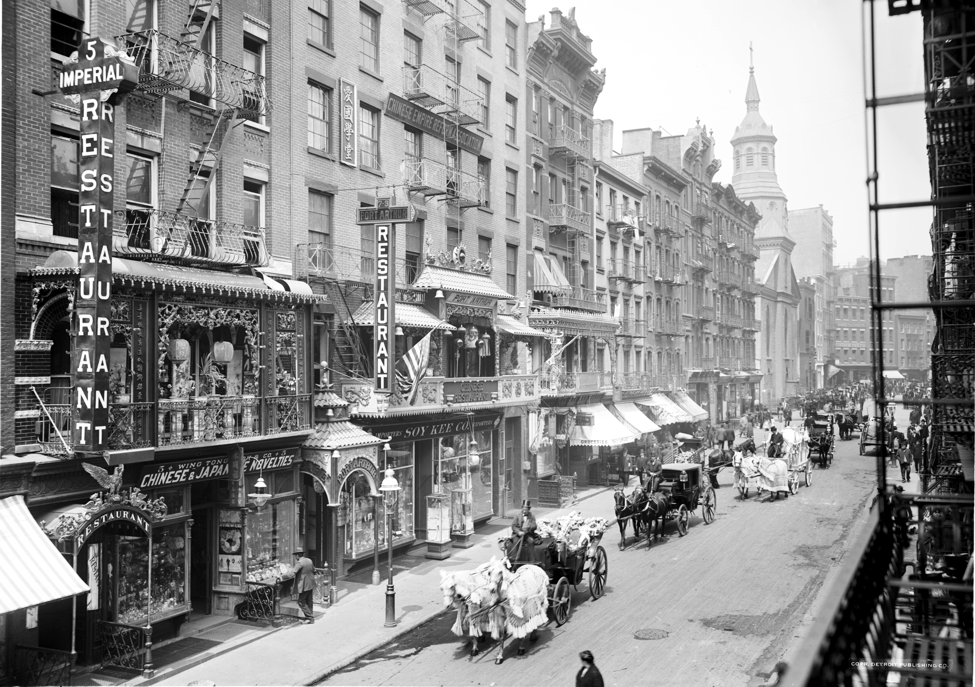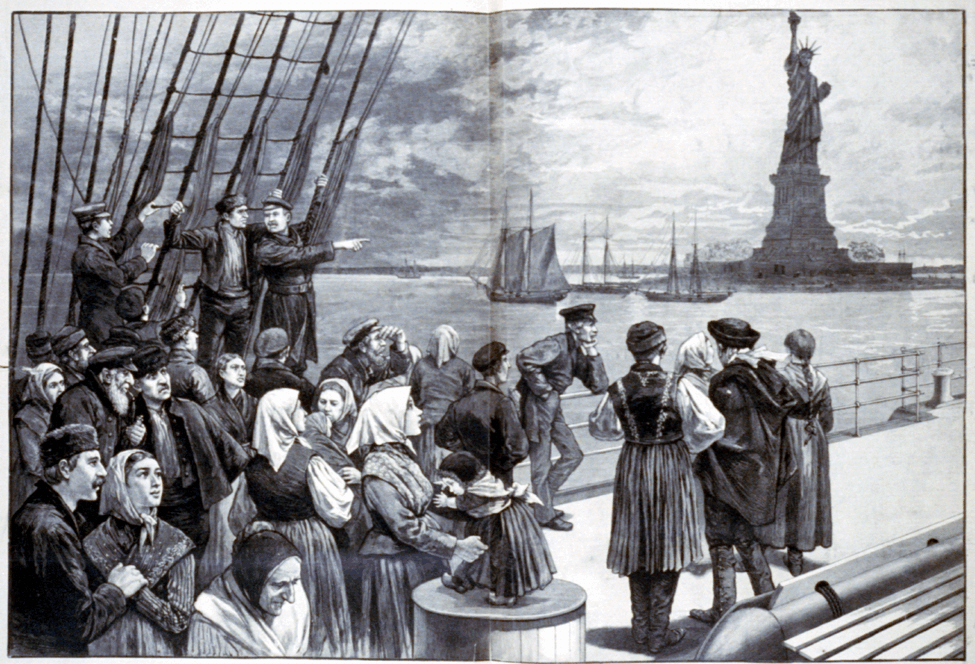
|
Sometimes, not a very warm welcome As immigration increased rapidly, there was sometimes a suspicious or even hostile attitude toward the new arrivals. The political cartoon on the right is from the same time period as the drawing above. This image, however, gives a very different view of the immigrants arriving from Europe in those years. (Galway is a famous city in Ireland.) Often immigrant groups from particular countries settled together in a specific neighborhood of big cities. That made the cultural differences of immigrants all the more obvious to native-born Americans. |
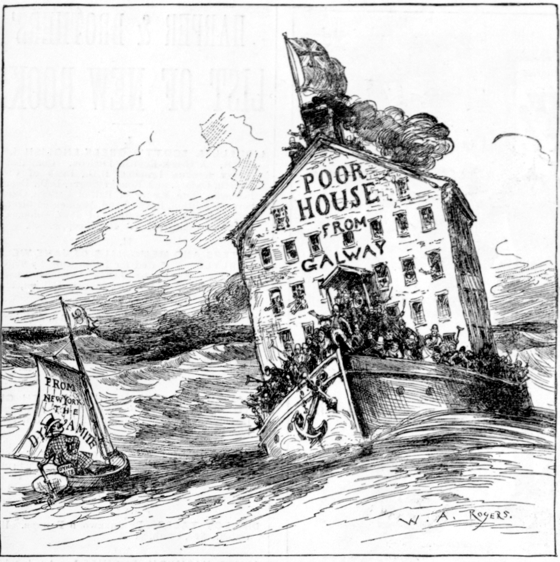 |
|
An immigrant
neighborhood in NYC
The photo shows Hester Street in New York City. It was a well known street in a neighborhood that had many Jewish immigrants from countries all over Eastern Europe. The picture was taken around 1900. |
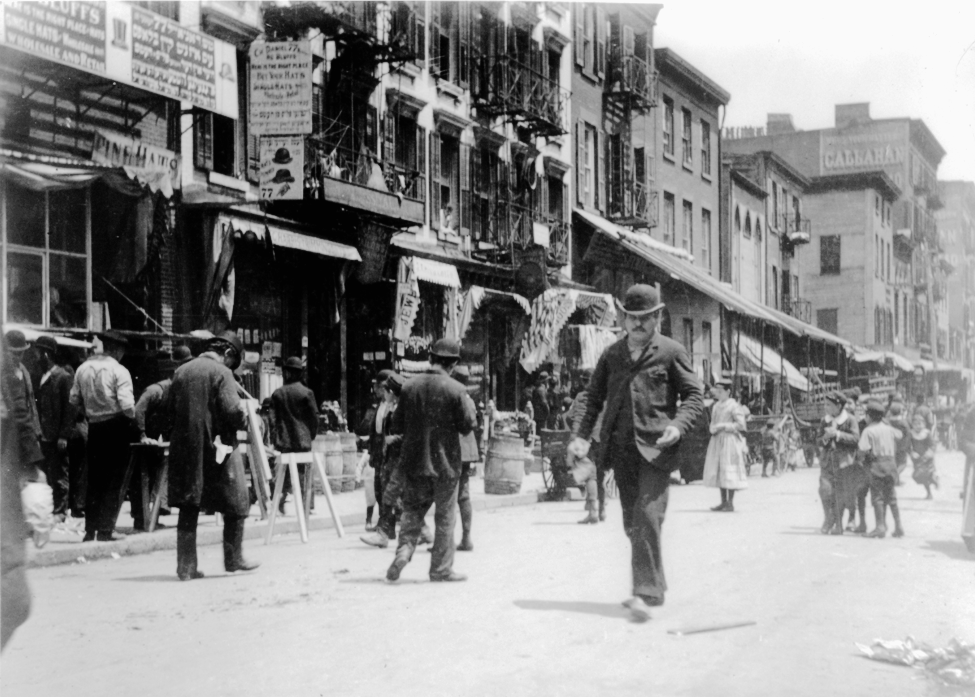
|
Discrimination
against
immigrants: the Irish
When a large wave of Irish immigrants began arriving after 1850, they often faced prejudice and discrimination. Many were very poor and desperate when they arrived. Irish neighborhoods in big cities had a reputation as rough, sometimes dangerous places. Many better-off Americans looked down on the Irish immigrants in those years. The Irish Americans shown in the photo worked as clam diggers in Boston in 1882. Like many jobs the Irish and other immigrants were hired to do, it was hard, dirty work that did not pay much. Keep in mind, though, that when you have nothing, even a tough job is a step up. |
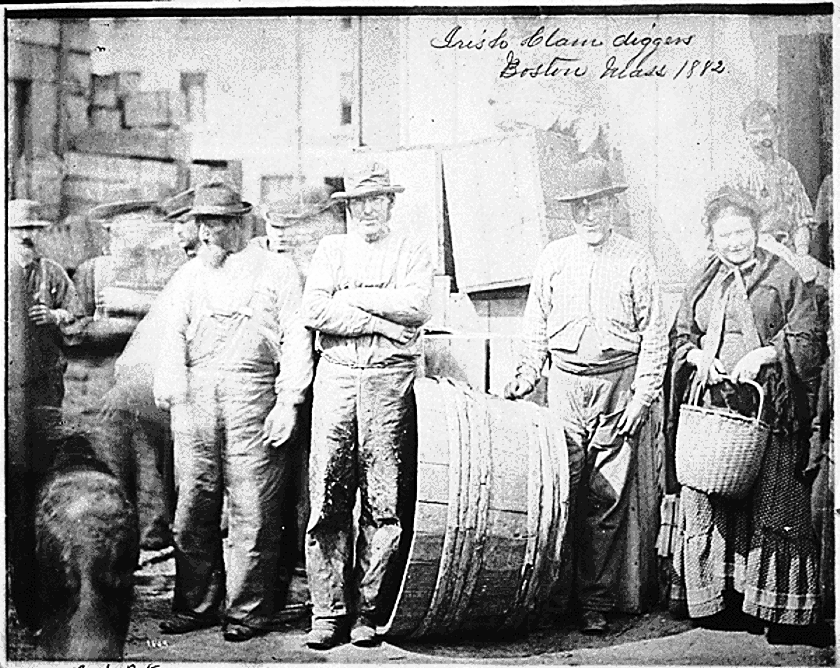
|
Those "No Irish
Need
Apply" signs
Signs worded like the one shown below are often used in history books to illustrate the problem of discrimination against the Irish immigrants. There is a debate among historians about whether such signs were common or actually very rare. Regardless, it is certainly true that the Irish - like many other groups of immigrants - faced a struggle to be fully accepted in America. |
|
The Irish,
accepted at last!
Over time the Irish, like all the other groups that arrived in those years, did become a respected part of the American scene. The photo shows a St. Patrick's Day parade of Irish Americans in New York City in the early 1900s. The famous parade is still held there every year, and it always attracts a big crowd. In fact, the St. Patrick's Day celebration has become so much a part of American culture that people of many different backgrounds often "Wear the Green" of old Ireland on that day. |
